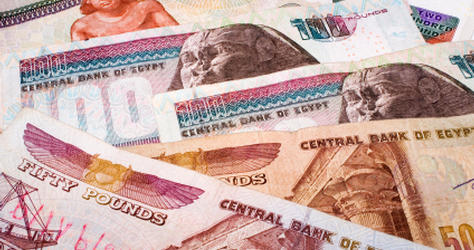
There is only one way for the EGP to go and that is down. Egypt’s net international reserves (“NIR”) came in at USD 15.01 billion in December reaching a critical level that will not allow the Egyptian Government to support the EGP anymore. Egypt’s foreign exchange sources in its balance of payments (“BoP”) continue to remain weak on the back of declining exports, investments and tourism leading to further downward pressure on the EGP.
Furthermore, the only source of external aid comes from Qatar, which has pledged a further USD 2.5 billion in aid to Egypt. All other sources of external financing have been put on hold pending the signing of the IMF loan agreement. Facing dire economic pressure and dwindling reserves, the Central Bank of Egypt (“CBE”) decided to shift its strategy to prioritizing the stability of its reserve position over the stability of the currency.
The CBE went on to introduce a system of foreign exchange auctions aiming to conserve foreign reserves, which have reached critical and dangerous levels according to the CBE itself. Essentially, the CBE decided to “float” the pound, which has led to a devaluation of c.6.8% in the EGP versus the USD since the foreign exchange auctions were introduced on December 31st, 2012. Given, the tough economic headwinds that Egypt is facing, the EGP will continue to weaken against the USD and could potentially hit 7.1/USD by the end of February.
So where does that leave us today?
The EGP further extended its losses against the USD at Tuesday’s CBE foreign currency auction, inching down approximately 6.8% since the auctions were introduced in December 2012 and 12.2% since the January 25 Revolution. On Tuesday the CBE sold USD 73 million at a cut-off price of c.EGP6.63/USD, up from 6.59/USD at the last auction, which was held on Sunday.
The news, coming out today, that the Government will negotiate a new agreement with the IMF (Planning and International Cooperation Minister Ashraf Al Arabi via Al Mal Newspaper), effectively means we are going back to the drawing board. Until the government finalizes its “new” economic program, presents it to the IMF and agrees with the IMF Board on how the proposed reform program will be implemented, the EGP will face further downside risks as the IMF deal is increasingly becoming the only positive trigger that could stabilize the EGP.
Without the IMF loan, which should theoretically unlock further aid disbursement from the EU and the US among others, the EGP is expected to reach 6.7/USD by the end of January and 7.1/USD by the end of February, implying 5-6% depreciation in the EGP. Three month non-deliverable forwards for the EGP stood at 7.2/USD, reflecting expectations for the currency to depreciate by c.6% in that period (Bloomberg Data).
In short, the Egyptian Government has to come up with a credible reform program that it could sell to the public and actually implement. The ability of the current government to come up with the right kind of reform program and its ability to execute on such a program is shoddy at best.


